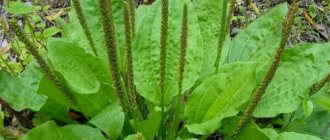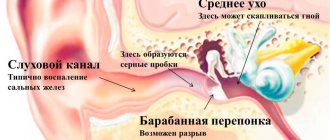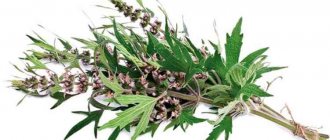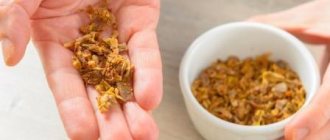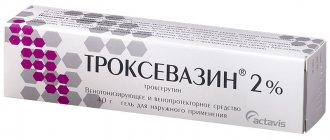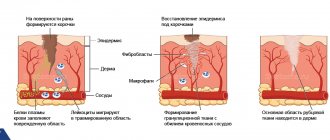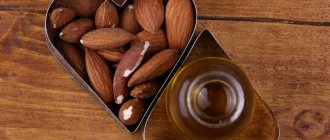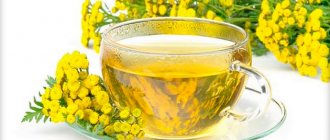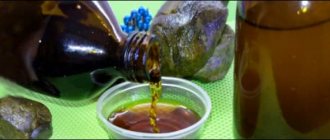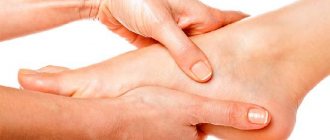Diseases of civilization, the inability to follow the rules of a healthy lifestyle, an unhealthy environment... These are the factors for which more and more people are turning to traditional medicine for advice.
Despite the effectiveness of modern medicine, pharmaceutical drugs have a wide range of side effects, sometimes significant. The effect of herbal remedies is milder, and the negative consequences are predictable (if the dosage is followed and contraindications are taken into account, they are absent).
Natural therapeutic methods include the use of alcoholic herbal extracts called tinctures. Let's consider the possibilities of their combinations and the impact of such combinations on health.
Important! Before using any product, read the instructions for use - in addition to their expressive healing properties, most of them have some contraindications for use. In particular, due to the alcohol content, tinctures are not recommended for children (usually under 12 years old), for pregnant women, or during breastfeeding.
Recipe No. 1 - universal mixture
This mixture of tinctures, called a “health cocktail” in folk medicine, has a number of positive effects on the body, including:
- Improving cerebral circulation.
- Antitumor, antispasmodic, anticonvulsant effect.
- Promoting the treatment of varicose veins and peripheral vascular diseases, prevention of thrombosis.
- Elimination of cardiac disorders (angina pectoris, tachycardia, arrhythmias).
- Reduced hypertension.
- Treatment of neuroses.
- Stimulation of hematopoiesis.
- Relief of post-stroke and post-infarction conditions.
All tinctures that are components of the “health cocktail” can be purchased at every pharmacy. Preparation of the medicine is simple. Pour into a dark glass bottle:
- 100 ml tincture of hawthorn, peony, motherwort, valerian,
- 50 ml eucalyptus tincture,
- 25 ml peppermint tincture,
- 30 ml Corvalol.
Stir. Add 10 cloves (it is sold in stores as an aromatic spice), shake, and leave to infuse in the dark for 2 weeks.
Take the product 30 drops with 1/2 tbsp. water, 3-4 times a day. The last dose is in the evening, before bedtime. The duration of the therapeutic course is 1 month. Can be repeated after a week break.
A mixture of sedative tinctures: what is useful
Several years ago, a doctor prescribed me such a sedative mixture when my heart began to play havoc. The week of taking it had a pretty positive effect.
A mixture of tinctures of valerian, motherwort, hawthorn and peony with the addition of Corvalol has excellent calming properties, helps with insomnia, stress, relieves nervous excitement, irritability, regulates vascular tone, lowers blood pressure, improves cerebral circulation, prevents the formation of blood clots, useful after heart attacks and strokes , with hypertensive crisis, with tachycardia.
♦ By the way, I advise you to read how to provide first aid for a hypertensive crisis.
This benefit is due to the fact that the mixture contains tinctures of beneficial herbs, which in themselves have a good calming effect, and together their properties are enhanced.
Let's look at them briefly.
Valerian . This plant has been used for medicinal purposes since the 1st century BC. At that time, valerian was used as a diuretic and against suffocation. Already in the Middle Ages, valerian became a popular remedy for calming the nervous system.
Nowadays, it has been experimentally proven that valerian relaxes smooth muscle spasms and reduces excitability. That is why it is so actively used as a sedative for severe experiences, stress, nervous excitement, insomnia and epilepsy.
Hawthorn . It is useful primarily for the heart, as it dilates the coronary vessels, as well as the vessels of the brain, normalizes the rhythm of the heart, increases its supply of oxygen, eliminates various unpleasant sensations in the heart area, reduces the level of cholesterol in the blood and the excitability of the nervous system, and improves metabolism.
Hawthorn is also used for shortness of breath, dizziness, insomnia, and is also useful for women in menopause.
Peony . Peony preparations are also an excellent sedative, and also have an anti-inflammatory, bactericidal, analgesic and tonic effect.
In Chinese and Tibetan medicine, peony is used to treat nervous and cold diseases, gastrointestinal tract, lungs, metabolic disorders and even tumors.
Motherwort . Motherwort preparations are very similar in their effect to valerian preparations and even surpass it.
Motherwort herb enhances the calming, anti-inflammatory effect of the other components of our mixture. It lowers blood pressure, regulates the activity of the gastrointestinal tract, and is useful for cardiovascular neuroses, heart defects, neuralgia, and cough.
♦ You can see more detailed information about motherwort tincture, what it helps with and how to use it correctly.
Corvalol . Corvalol has an additional sedative effect. It relieves spasms and is indicated for neuroses, insomnia, tachycardia, and increased excitability.
Listening to the opinions of my readers, and I myself learned some new information, I want to make additions to the originally written text.
Now there are opinions that supposedly Corvalol is harmful to health. I think this is not justified. It is unlikely that our pharmaceutical industry would produce drugs that are known to cause harm. But this is purely my personal opinion.
We use irgi leaves for treatment correctly
I use Corvalol in this mixture, since this tincture serves as an ambulance for minor heart ailments and I like it more than Corvalol alone.
But, in principle, you can not add corvalol, but use only four components, or you can replace it with chestnut tincture.
Horse chestnut . Preparations from this plant strengthen blood vessels and cleanse their walls of cholesterol, reduce blood viscosity, prevent blood clots, have anti-inflammatory, analgesic and sedative properties, and also relieve swelling, prevent heart attacks and strokes.
♦ I advise you to get acquainted with the properties and uses of horse chestnut and its tincture.
How to take a mixture of tinctures of valerian motherwort peony hawthorn
All of these listed tinctures are sold in pharmacies, they are always in stock and cost a penny.
Usually the volume in bottles with tinctures is the same, and we need to take them equally.
We pour the tinctures of valerian, motherwort, peony, hawthorn into one jar, add Corvalol (or chestnut tincture) there. Close the lid tightly and our medicinal soothing mixture is ready. This cocktail is medicinal.
It should be stored in a dark place at room temperature.
I usually pour part of the mixture into a Corvalol bottle with a dosed cap, it’s more convenient to use.
How to drink a mixture of tinctures
You need to take a mixture of tinctures, 30 drops dissolved in 50 ml (one quarter glass) of water. It is not advisable to eat within half an hour after taking it.
The number of doses per day depends on your condition. Sometimes once in the morning or only in the evening before bed is enough.
But most often it is recommended to drink a mixture of tinctures 3 times a day.
I drink in the morning and evening, since it’s not very convenient to do this during the day at work.
The duration of use is from one to two weeks (just one bottle of Corvalol taken twice a day is enough for two weeks) to a month.
In principle, there are no time limits, only to avoid addiction, you should take a week’s break after a month of use and take into account contraindications.
Mixture of sedative tinctures: contraindications
Since sedative tinctures containing alcohol are used, it is natural that they are contraindicated for people with alcohol addiction, children, pregnant and lactating women.
People whose profession requires special attention should use it with caution, as the mixture of tinctures has a strong sedative effect.
And as you probably noticed, since hawthorn and motherwort can lower blood pressure with long-term use, these tinctures are undesirable, or at least they cannot be used for a long time and regularly by people with low blood pressure.
The mixture is not indicated for bradycardia.
Naturally, moderation must be observed, as everywhere and in everything. If the mixture of tinctures is consumed excessively, the reaction may be the opposite: instead of calming, excessive agitation will appear.
In addition, you need to take into account that there may be individual intolerance or allergy to certain components. Therefore, if you have never used any of them before, it would be good to test them separately and in pairs first.
My reviews on the use of a mixture of tinctures of valerian, peony, hawthorn, motherwort and Corvalol
As I already wrote at the beginning of the article, this sedative mixture once helped me with incipient tachycardia.
Moonshine from honey: 2 recipes at home
I also drank it during times of deep stress after a divorce, I am very pleased with it, it helped me get through those difficult days.
I know many cases where such a mixture of tinctures helps hypertensive patients; with its constant use, the pressure is normalized and the state of health improves.
I sometimes take the mixture as a comprehensive treatment for the thyroid gland, as a sedative for tachycardia. When my heart is heavy, I also resort first to this tincture and am always satisfied with it.
Be healthy!
Author of the blog “Health as an effort of will” Olga Smirnova
Interesting posts on our blog:
- Apple cider vinegar - properties and medicinal uses. Dr. Jarvis's advice
- Tachycardia - symptoms, causes and what to do at home
- Herbs and herbs that are good for the heart and blood vessels
- Chronic fatigue in women - symptoms, causes, treatment at home
- Miracle tincture of garlic with red wine
- Honey is the best simple effective folk remedy for insomnia
- My proven folk remedies for headaches
Recipe No. 2 – for the heart and joints
The mixture is known as VKPBP, an abbreviation for:
- B – valerian,
- K – horse chestnut,
- P – peony,
- B – hawthorn,
- P – motherwort.
The medicinal properties of this combination include the treatment of the following diseases and disorders:
- Joint diseases.
- Heart diseases.
- Prevention of heart attack.
- Headache, incl. migraine.
- Circulatory disorders.
- Depressive states.
- Immune support.
Preparing the medicine is no more complicated than described above. Mix 50 ml of tincture of horse chestnut, peony, valerian, motherwort, and hawthorn. There is no need to infuse the product. Take 50 drops 3 times a day. The duration of the course is similar to the above recipe.
How to take sedative drops for children
Each type of sedative drops for children has its own rules of use. The dosage and duration of treatment should be determined by a pediatric neurologist, taking into account the age and condition of the baby.
Most drops are taken before meals, but it is best to do this shortly before bed. If your child has difficulty taking the drops, you can stir them into a small amount of sweet tea, but not juice.
Often, sedative drops provoke allergic reactions in children, such as rashes or itchy skin. Complaints from the digestive system are also possible - nausea, abdominal pain, upset stool. For any negative reactions, you should contact your pediatrician.
Recipe No. 3 – for hypertensive patients
A considerable percentage of the modern population suffers from hypertension. Constant high blood pressure can be reduced using a combination of plant extracts: tincture of peony, valerian, hawthorn and the drug Corvalol.
Mix 100 ml of each product, add 100 ml of distilled water. Take 1 tbsp. In the evening. Course - until the end of the funds. Along with lowering blood pressure, the medicine will help eliminate sleep problems and strengthen the central nervous system.
Recipe No. 4 – for headaches of vascular etiology
Constriction of cerebral vessels is a relatively dangerous condition with extremely unpleasant symptoms, including severe headache. In this case, the medicine prepared according to the following recipe will be beneficial. In a dark glass bowl, mix 50 ml of tincture of motherwort, eucalyptus, mint, valerian, peony, and hawthorn. Add a bag (10 g) of ground ginger, 1 tbsp. honey and 10 cloves. Leave to infuse for 1 month, strain, pour into convenient bottles (ideally with a dispenser). Take 25-30 drops 2 times a day.
A few more combinations
Paired combinations of extracts are often used. Medicines are used to lower blood pressure, treat insomnia, relax the body, in general (useful for men and women exposed to stressful situations). The most common combinations:
- Valerian + peony.
- Valerian + motherwort.
- Hawthorn + motherwort.
- Motherwort + peony.
Mix the drugs in a 1:1 combination. Take 15-20 drops 3 times a day. Course – 1 month. Treatment can be repeated after a week's break.
To reduce blood pressure, it is recommended to take a combination of motherwort + hawthorn. If your heart rhythm is abnormal, a combination of hawthorn and Corvalol will help. The same composition will relieve the symptoms of menopause and improve the condition of the endocrine system.
How to take Corvalol drops
Corvalol is a combination drop containing peppermint ester, phenobarbital, and alpha-bromoisovaleric acid ester. After taking the drops, vasodilating, sedative and antispasmodic effects are observed.
Drops are indicated for the correction of insomnia, tachycardia, and neurosis. Corvalol is also prescribed for hypertension, cardialgia, increased irritability, and colic.
Take drops before meals, a single dose is 20-30 drops, which are dissolved in 50 ml of water. Three doses are taken per day. In childhood, the dose ranges from 3 to 15 drops.
The duration of treatment should be determined by the doctor. Since the drug has a sedative effect, care must be taken during treatment - driving is undesirable.
Carvalol has a number of contraindications: impaired liver and kidney function, pregnancy, hypersensitivity. Side effects include: depression of heart rate, drowsiness, allergic manifestations.
The disadvantage of Corvalol is the development of withdrawal syndrome after prolonged use. To avoid this, it is unacceptable to exceed the duration of treatment.
"Corvalol"
The drug has antispasmodic and sedative effects. It is recommended for use in the following cases. As a vasodilator and sedative:
- Insomnia.
- Irritability.
- Autonomic disorders.
- Neurological disorders.
- Hypochondria syndrome.
- Diseases of the cardiovascular system (hypertension, tachycardia).
As an antispasmodic:
- diseases and disorders of the gastrointestinal tract (colon diseases, biliary colic).
Contraindications for use:
- severe liver/renal failure,
- lactation,
- individual sensitivity.
How to take sedative drops correctly
Most sedative drops are made from plant materials. Although precise studies have not been conducted and the effectiveness of herbal remedies has not been proven, if the dosage regimen is followed, they perfectly calm the nervous system.
Herbal preparations with a calming effect are available over the counter. Nevertheless, their use should be carried out according to indications and under the supervision of a doctor.
The most popular components of herbal sedatives are:
- Valerian is an affordable and fast-acting remedy. Doctors do not recommend taking valerian in parallel with other sedatives. The course of treatment should be short-term due to the risk of blood thickening.
- Motherwort is a safe component with an excellent sedative effect. Prohibited for use during gestation as it can cause uterine hypertonicity.
- Passionflower is a completely safe ingredient included in sedative preparations. Used from childhood.
Herbal sedatives are recommended to be taken after meals, since plant extracts and alcohols irritate the gastric mucosa and can provoke gastritis and erosions.
Synthetic sedatives include barbiturates - Valocardin, Barboval, as well as benzodiazepines - Relanium, Diazepam. Synthetic drugs are taken regardless of food strictly in accordance with the instructions. They have many contraindications and often cause adverse reactions, so they can only be taken as prescribed by a doctor.
General recommendations:
- The optimal time to take sedatives is from 13:00 to 15:00.
- Regardless of the composition, all sedative drops should not be taken with alcohol or caffeine.
- It is not recommended to drink drops with citrus juices, tea or coffee.
- It is forbidden to exceed the dosage and take drops for a long time, so as not to cause severe depression of the central nervous system.
Valerian
The drug has a beneficial effect on the treatment of insomnia. It supports sleep without the unpleasant side effects of classic medications, reduces the time it takes to fall asleep, and improves sleep quality.
Its effect is similar to the effects of low doses of sleeping pills - benzodiazepines. Effects of the drug:
- Countering fears and depression.
- Relieving spasms.
- Reduced pressure.
- Moderate analgesic effect (anesthetic effect).
- Support of cognitive functions (memory, concentration).
- Relaxing effect.
Important! The drug is not intended for children, pregnant or lactating women, or in case of hypersensitivity.
Motherwort
The drug supports normal function of the cardiovascular system, helps maintain heart contractions and the condition of the coronary arteries. The herbal medicine is used for the following health problems:
- Hypertension.
- Angina pectoris, arrhythmia, myocardial disease.
- Increased heart rate.
- Neurosis.
- Restlessness, anxiety and, associated with these factors, insomnia.
- Menopausal manifestations.
- Disorders of the thyroid gland.
- Prostate diseases.
- Delayed menstruation (except during pregnancy!).
Due to its ability to cause uterine contractions, the medicine is dangerous for pregnant women (can cause miscarriage). The drug is not suitable for people with a blood clotting disorder.
Motherwort, valerian, hawthorn, peony, Corvalol
The effectiveness of this mixture can be assessed based on patient reviews. You should also familiarize yourself with the properties of each of the components - the principle of action, composition, indications and contraindications. The frequency and likelihood of side effects also need to be taken into account.
Compound
- Corvalol is a combination of several components. The liquid dosage form contains (1 ml): ethyl ester of α-bromoisovaleric acid (ethyl bromoisovalerate) – 20 mg;
- phenobarbital – 18.26 mg;
- peppermint oil – 1.42 mg;
- sodium hydroxide – 3.15 mg;
- ethyl alcohol – 0.58 ml;
- distilled water – 0.42 ml.
Mechanism of action
- The active components of Corvalol have a complex effect: relax the smooth muscles of blood vessels, calm the nervous system, and normalize sleep.
- Peony evasive contains substances that improve oxygen metabolism, destroy pathogens, relieve spasms and cramps.
- Motherwort has the ability to affect the central nervous system. The tincture of this plant inhibits excitement and calms.
- Valerian has a sedative effect and relaxes the intestinal muscles. At the same time, the therapeutic effect is cumulative: it manifests itself slowly and gradually, remaining for a long time.
- Hawthorn relieves vascular spasms, thereby improving blood supply to the heart and brain. Heart rate and blood circulation in general are also normalized.
Indications
- heart failure:
- sleep disorders;
- neurosis-like disorders;
- nervous excitement;
- tachycardia – rapid heart rate;
- intestinal spasms.
For Peony tincture:
- neuroses and neurosis-like conditions (protracted reversible mental disorders);
- neurocirculatory dystonia (functional disruptions in the functioning of the heart and blood vessels caused by impaired hormonal regulation).
For Motherwort tincture:
- neurocirculatory dystonia;
- increased excitability of the nervous system;
- high blood pressure.
For Valerian tincture:
- insomnia;
- increased excitability;
- functional disruptions in the functioning of the heart and blood vessels;
- intestinal spasms.
For Hawthorn tincture (it is used as an addition to the main treatment):
- atrial fibrillation (chaotic heart contractions);
- tachycardia – rapid heart rate;
- functional disorders of the cardiovascular system.
Contraindications
A common prohibition on use for all five drugs is hypersensitivity to their components. Other contraindications differ.
- breastfeeding (lactation);
- liver or kidney failure.
For Peony tincture:
- age less than 12 years;
- pregnancy, breastfeeding;
- liver and kidney failure.
The only contraindication for Motherwort tincture is hypersensitivity.
For Valerian tincture:
- pregnancy and lactation;
- age less than 1 year.
For Hawthorn tincture – age under 12 years.
Side effects
If you add up the possible side effects from each drug, using a mixture of them can cause:
- drowsiness;
- weakness;
- allergy;
- dizziness;
- nausea, vomiting;
- decreased blood pressure;
- constipation (with long-term use of the mixture, due to valerian).
Hawthorn
The medicine has a beneficial effect on cardiac activity, counteracts arrhythmias, tachycardia, regulates blood pressure, and dilates blood vessels. The drug is used to prevent coronary heart disease, relieve nervous tension, irritability, treat insomnia, migraines, neuroses, and cardiac dysfunction. Warning : Drops are not intended for children.
Eucalyptus
Eucalyptus has a beneficial effect on overall human health and promotes healing. The alcohol extract has disinfectant effects, helping to more easily overcome cold symptoms, counteracts some viruses, and has an antispasmodic effect. Antiseptic effects cause accelerated wound healing. The medicine reduces fever, relieves headaches, incl. migraine. Properties:
- anti-inflammatory,
- disinfectant,
- antiparasitic,
- antibacterial.
The medicine is recommended for the following problems:
- Cough.
- Breathing problems.
- Glycemic disorders.
- Deterioration of the condition of joints and muscles.
- Viral infections.
- Cold.
Eucalyptus tincture is not suitable for asthmatics and small children.
Can children take sedative drops?
Tearfulness, hyperactive syndrome, irritability, and problems falling asleep are often reasons for prescribing sedative drops to children. In mild cases, doctors give preference to herbal preparations that have a gentle effect on the baby’s nervous system and calm him down. Sometimes you have to resort to more serious drops with synthetic sedatives, which are available by prescription.
Often it is not possible to do without sedative drops when the baby goes to kindergarten or school. Drops with a sedative effect help prevent causeless tantrums, overcome fears and improve sleep.
horse chestnut
Horse chestnut affects almost the entire vascular system - it counteracts arteriosclerosis, disruption of peripheral blood flow, blood flow in the coronary arteries, helps with inflammation of the veins, varicose veins, thrombosis, and improves lymphatic edema. The drug increases the strength and elasticity of blood vessels. Health effects:
- Normalization of the activity of the vascular and cardiac systems.
- Antioxidant action.
- Improving joint mobility.
- Relief of PMS and menopause symptoms.
- Increasing the body's defenses.
- Improved skin condition.
- Normalization of the stomach and circulatory system.
Due to the alcohol content, the tincture is not suitable for children, pregnant and lactating women.
Contraindications
Since all drugs contain alcohol, this mixture of tinctures is contraindicated:
- pregnant women;
- during lactation;
- children under 12 years old.
For those who need to drive in the morning, this method is also prohibited, because... Due to the sedative effect, there is a risk of falling asleep while driving.
Corvalol is taken 40-50 drops depending on the desired effect.
